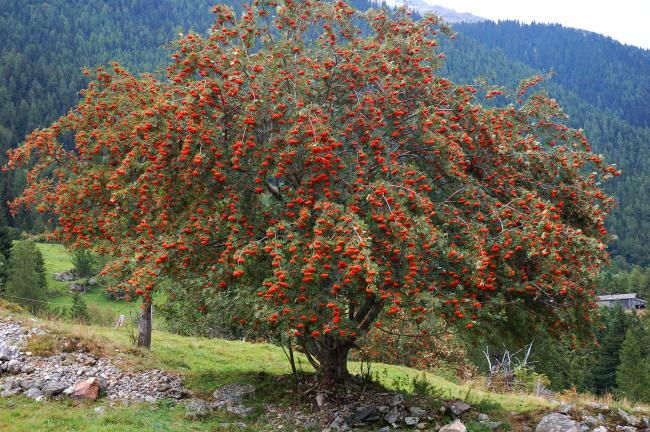March 17, 2022

By Joanne Garton, VT UCF Technical Assistance Coordinator
Mid-March is not yet spring in the cold expanses of central Vermont. On the sunniest and warmest of days, snow transforms to ice, only to be covered by snow again the following week. And while it’s only the beer that is green on Saint Patrick’s Day, Vermonters are still thinking about the green shades of spring to come. Latching onto all things Celtic, let’s reflect on how a certain tree has shaped the spiritual health of a culture for centuries.
Steeped in mist and mystery, the Rowan tree holds a special place in Celtic folklore. In some versions of Druid and Norse mythology, it was the tree created from dripping blood and tangled feathers of an eagle chasing the chalice of youth (I paraphrase), the tree from which the first woman sprang (the first man springing from ash), and the tree that saved Thor from certain death in a turbulent river (spoiler: he ultimately suffers death by serpent). As such, the Rowan tree is connected to protection from witchcraft, enchantment, danger, or sickness, its pentagram symbol on each fruit (Rosaceae by any other name) a representation of its powers. To some, the wood of the Rowan tree cannot be harvested, only the berries. To others, the wood is used for the toughest of tasks as tool handles, spinning wheels, or threshing tools. But to all, it is a tree worthy of countless songs and poems, integral to stories of bravery and protection told through hundreds of years of folklore.
The Rowan tree, also called mountain ash (alas, not Sorbus americana but Sorbus aucuparia), finds its home in manicured gardens or streetscapes, outside front doors, or deep in the forest. Remarkably, it also thrives on cold and exposed hillsides, flowering delicate white blossoms each spring and erupting into red berries in summer. Sometimes called the Flying Rowan or The Lady of the Mountain, its abilities to grow in inaccessible places are admirable, tenacious, and coveted. Trees in each of our cultures can do that -- embody aspirational qualities that ultimately outlive us, or even escape us. Names evoking strength, endurance, royalty or immortality often find their way into the common parlance. As our landscapes slide into the green springs of our respective regions, note which trees make you feel especially wise, strong, and protected. In your own folklore, what would they be called?
Photo credit: Richard Jones via Flickr.